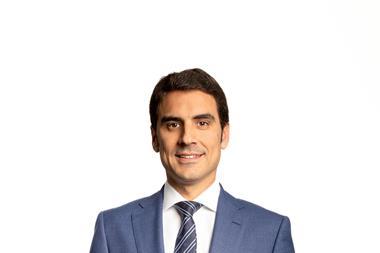Solvency II is coming to pension funds - and it will penalise those invested in real estate, Shayla Walmsley warns.
PwC partner John Forbes's characterisation of the IORP review as less Solvency II-lite than "full fat with whipped cream and a cherry on top" raises two questions.
First, what are the implications of the revamped IORP risk requirements for pension-fund real estate investors? Second, in any case, why should risk management requirements for pension funds be any different from those for insurers, especially given that they share a regulator?
The European Insurance and Occupational Pensions Authority (EIOPA) consultation on the IORP quantitative impact study, which closes at the end of July, has already come in for industry criticism. Aon Hewitt's Kevin Wesbroom, for example, has suggested it is an attempt to answer an unknown question. No one is quite certain which problem it is trying to address, nor what regulators will do with the findings.
Shock provisions
The 'holistic balance sheet' is the major problem for real estate investors. Defined benefit (DB) schemes will balk at the 25% capital charge included in the IORP's shock provisions. In fact, the charge could even hasten the demise of the "more primitive species" (that is, DB schemes), according to Forbes.
Defined contribution (DC) schemes are in a somewhat different position because the investment risks transfer to pensioners. But, as Goldman Sachs Asset Management's Paul Trickett pointed out this week, DC schemes' allocations to real estate are in any case "negligible" despite the asset class's liability-matching potential. US DC schemes, for example, allocate on average 1% to real estate.
Based solely on the cost of capital, it would make sense for pension funds to reduce their real estate holdings - not least because the IORP proposals make no distinction between direct and indirect, and even treatment of real estate lending does not take into account collateral. Yet as Chris Luck, a partner at law firm Nabarro, points out, cost of capital isn't the only criterion pension schemes will factor into their investment decisions.
In any case, attempts to change the treatment of real estate by lowering the capital requirement from 25% to 15% - as advocated by the IPD - are unlikely to succeed. Although EIOPA acknowledges that "occupational pensions and insurance are not identical and that the differences will sometimes merit different approaches", the emerging consensus is that it is unlikely that different approaches - or the dilution of Solvency II anticipated by the industry hopeful - will be forthcoming.
Forbes believes the basis for assessing how much extra capital pension schemes would need to hold against the risk of unexpected events will be "unsurprisingly very, very similar" to that for insurance companies.
"I can't see why there would be one number from insurers and another for pension funds," agrees Luck.
The least worst option
Not all European pension funds are necessarily railing against the upcoming strictures. Norway's Akershus county pension scheme is one of the few to embrace the extension of Solvency II provisions as preferable to domestic legislation that caps investment in alternatives at 10%. (The Norwegian financial services regulator claimed in its risk report earlier this year that low interest rates present "challenges to which there is no rapid, simple solution in Norway or elsewhere", and insurers would probably need to strengthen their capital regardless of Solvency II.)
Danish public pension fund ATP has already said it would accept the provisions of Solvency II even though it is not subject to them. Although its real estate subsidiary has not been involved in the process, the €80bn scheme claims doing so has improved management of its risk exposures.
But if there is a whiff of inevitability about the proposals, not all critics of the proposals have given up yet. The UK government, in the form of pensions minister Steve Webb, has called the idea of extending Solvency II from insurers to pension schemes "pointless" and resolved to fight them until the European Commission sees sense.


















